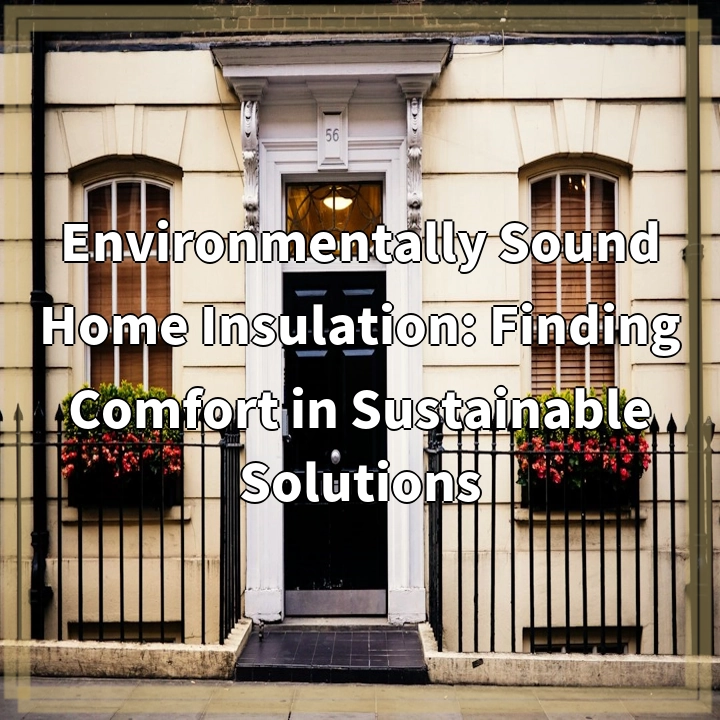
What is Environmentally Sound Home Insulation?
Environmentally sound home insulation refers to the use of insulation materials and techniques that have minimal negative impacts on the environment and human health. It involves choosing insulation products that are energy-efficient, sustainable, and made from renewable or recycled materials. This type of insulation aims to reduce the carbon footprint of buildings and improve energy efficiency while providing optimal comfort for residents.
Real-World Problems Associated with Environmentally Sound Home Insulation
1. Limited Availability: One of the challenges associated with environmentally sound home insulation is the relatively limited availability of sustainable insulation materials. While traditional insulation options like fiberglass or foam insulation are widely available, finding eco-friendly alternatives in local stores or from contractors can be more challenging. It may require special ordering or researching niche suppliers.
2. Higher Upfront Costs: Environmentally sound insulation materials often come with a higher upfront cost compared to traditional options. This can deter homeowners or construction projects that prioritize cost-effectiveness over environmental considerations. However, it is important to weigh the long-term benefits and energy savings that can outweigh the initial investment.
3. Performance Trade-offs: Some sustainable insulation materials may have lower thermal performance compared to traditional options. This means that more of the environmentally friendly material may need to be installed to achieve similar insulation levels. It can also require additional investment in other energy-saving measures within the building to compensate for the potential difference in performance.
4. Lack of Awareness and Information: Many homeowners and builders may not be aware of the availability and benefits of environmentally sound home insulation. There is often a lack of clear information and guidance regarding the different types of sustainable insulation materials, their installation processes, and their long-term performance. This lack of awareness can hinder more widespread adoption of eco-friendly insulation practices.
5. Retrofitting Challenges: Retrofitting insulation in existing buildings can pose challenges, especially for older homes or buildings without proper insulation infrastructure. Some eco-friendly insulation materials may require specific installation techniques or modifications to the building structure, which can be more complicated and costly compared to retrofitting with traditional materials.
6. Regulatory Barriers: Depending on the jurisdiction, there may be regulatory barriers or outdated building codes that do not necessarily encourage or support the use of environmentally sound home insulation. This can make it harder for homeowners and builders to choose sustainable options, as they may face bureaucratic obstacles or limited incentives.

Solutions for Environmentally Sound Home Insulation
Finding alternatives to traditional insulation methods that are both environmentally friendly and cost-effective can be challenging. However, there are several solutions that can help address the real-world problems associated with environmentally sound home insulation.
1. Increased Availability and Education
To overcome the limited availability and lack of awareness, it is crucial to educate homeowners, builders, and contractors about the benefits and options of environmentally friendly insulation. Increased availability can be achieved by supporting local suppliers and advocating for the use of sustainable materials in building codes and regulations.
2. Financial Incentives
To encourage the adoption of environmentally sound insulation, governments and organizations can provide financial incentives, such as tax credits or rebates, to offset the higher upfront costs. These incentives can help bridge the affordability gap and motivate homeowners and builders to prioritize sustainable insulation options.
3. Technological Advancements
Continued research and development in insulation materials and techniques can lead to improved performance and affordability of environmentally friendly options. Advancements in manufacturing processes and engineering can make sustainable insulation materials more accessible, efficient, and cost-effective.
4. Building Code Revisions
Efforts should be made to update building codes and regulations to encourage the use of environmentally sound insulation. Including requirements or incentives for sustainable insulation in building codes will create a more supportive environment for homeowners and builders to choose eco-friendly options.
5. Retrofitting Support
To tackle the challenge of retrofitting older buildings, providing resources and support for homeowners can help navigate the complexities of upgrading insulation. This can include educational materials, financial assistance, and guidance on choosing the right sustainable materials and installation methods for retrofit projects.















